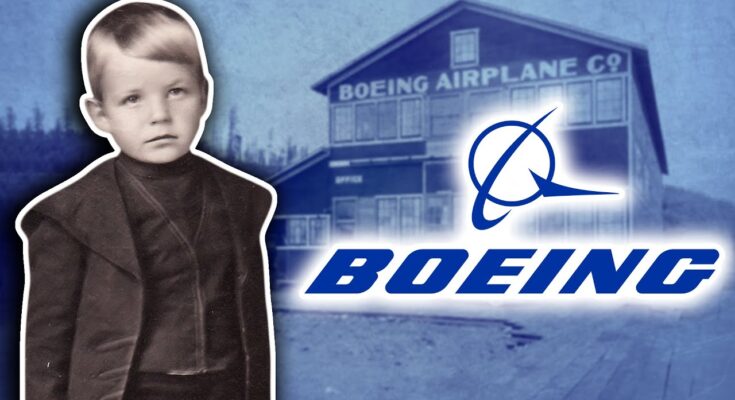The story of William Edward Boeing is a classic tale of vision, persistence, and innovation. From his modest beginnings in the timber business of the Pacific Northwest to founding what would become the world’s largest aerospace company, Boeing’s journey is a testament to how passion and determination can reshape entire industries. His path was not without obstacles, but through pivotal moments — particularly during global conflicts — William Boeing carved out a legacy that continues to influence aviation today.
Early Life and Unexpected Beginnings
Born in 1881 in Detroit, Michigan, William Boeing grew up during a time of rapid industrialization in America. His father, a prosperous mining engineer, left behind a significant inheritance that gave William financial security. After briefly studying engineering at Yale University, Boeing ventured west to the Pacific Northwest, where he invested in timberland, a booming industry at the time.
It was in the rugged outdoors, among towering forests and expansive landscapes, that Boeing developed the business acumen and resourcefulness that would later define his corporate endeavors. His success in timber gave him the capital he would later pour into a new, exciting passion — aviation.
Discovery of Flight
Boeing’s interest in aviation was sparked in 1910 when he witnessed a manned aircraft flight at an air show in Los Angeles. Fascinated by the possibilities of flight, he soon took lessons and purchased his own seaplane. However, after a crash landing and a frustrating wait for spare parts, Boeing realized there was a glaring opportunity: he could build better aircraft himself.
With his timber knowledge, access to high-quality materials, and a growing curiosity for engineering, Boeing laid the foundation for his new endeavor.
Founding the Boeing Company
In 1916, Boeing, along with Navy engineer George Conrad Westervelt, built their first aircraft: the B&W Seaplane. It was a modest two-seater, but it represented a major step forward. That same year, Boeing founded Pacific Aero Products Co., which would later be renamed Boeing Airplane Company in 1917.
Initially, the aviation industry was in its infancy, and public demand for aircraft was low. The U.S. military had limited interest, and civilian aviation was considered little more than a novelty. Boeing’s company survived mainly by producing training aircraft for the U.S. Navy during World War I.
Even with government contracts, the end of World War I led to a steep decline in aircraft demand. Many early aviation companies collapsed. Boeing, however, saw opportunity where others saw failure. He diversified the company’s operations — building furniture, boats, and even designing flat-bottomed boats for mail delivery. This flexibility allowed the Boeing Company to stay afloat during tough times.
The Turning Point: The World Wars
The real catalyst for Boeing’s transformation came with the onset of World War II. Military demand for advanced aircraft skyrocketed, and Boeing was ready. By this time, the company had already developed a reputation for building reliable, innovative planes.
One of Boeing’s key successes was the development of the B-17 Flying Fortress, a heavy bomber that became a symbol of American airpower. Later, the B-29 Superfortress, famous for its role in ending the war in the Pacific, further cemented Boeing’s dominance.
During the war, Boeing’s workforce exploded to nearly 50,000 employees. Factories operated around the clock, and the company became integral to the Allied victory. The massive wartime production propelled Boeing from a struggling aircraft manufacturer to one of the foremost names in aviation.
Post-War Innovations and Commercial Expansion
After World War II, many assumed Boeing might decline as military contracts dried up. However, William Boeing had long since planted the seeds of diversification. The company shifted focus toward commercial aviation, foreseeing the rise of air travel for civilians.
Boeing developed the Model 377 Stratocruiser, a luxury airliner that offered unprecedented comfort and speed for its time. But it was the Boeing 707, launched in the late 1950s, that revolutionized global travel. As the first commercially successful jet airliner, the 707 shrank the world, making intercontinental flights faster, more affordable, and more common.
Boeing’s investments in jet technology propelled the company into the commercial aviation stratosphere. Soon, airlines around the world were filling their fleets with Boeing aircraft.
William Boeing’s Later Years
Despite his massive impact on aviation, William Boeing himself stepped back from day-to-day company management in 1934, partially due to antitrust actions that split his empire into several entities under the Roosevelt administration. Disillusioned by government interference, Boeing retired to a relatively private life, investing in real estate and horse breeding.
He lived to see the early fruits of the commercial jet age but passed away in 1956, just before Boeing would become a household name around the world with the 707’s triumph.
Boeing Today: A Legacy That Endures
Today, The Boeing Company is a global aerospace giant, leading not only in commercial jetliners but also in defense, space exploration, and advanced systems. Boeing aircraft connect cities, carry astronauts to space, and protect nations.
From the iconic 747 “Jumbo Jet” to the 787 Dreamliner, Boeing’s engineering marvels continue to define innovation in aviation. The company also plays a crucial role in the space industry, partnering with NASA and contributing to ambitious projects like the Artemis program and satellite networks.
Despite facing challenges in recent years, including intense competition and scrutiny over aircraft safety, Boeing remains one of the most influential companies in the world, employing over 140,000 people globally and generating billions in revenue annually.
Conclusion: A True Aviation Pioneer
William Boeing’s journey from timber magnate to aerospace pioneer exemplifies the spirit of entrepreneurship and innovation. He saw the future of flight when most saw it as a dangerous novelty. Through resilience during lean times and ambition during boom periods, he built a company that not only survived but shaped the world.
His legacy is not just in the aircraft that bear his name but in the idea that with bold vision, steady leadership, and relentless innovation, even the sky is not the limit.



